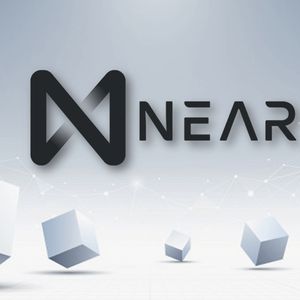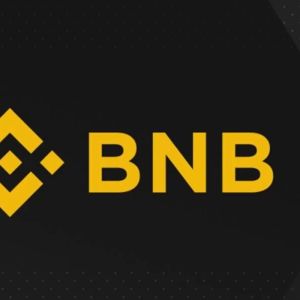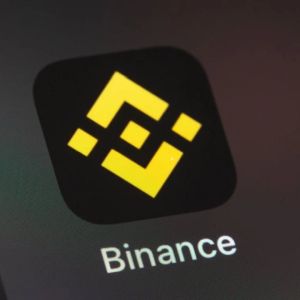Crypto researcher Stern Drew has shared a detailed breakdown of Ripple’s European patent EP3054405A1, framing it as a technical advancement that directly positions XRP for central importance in the future of global financial infrastructure. The patent outlines a concept known as “Temporary Consensus Subnetworks,” which, according to Stern Drew, provides the architecture for dramatically faster and more secure blockchain-based payment processing. He suggests this mechanism has the potential to replace traditional financial rails, such as SWIFT and interbank networks, by leveraging XRP as the core bridge asset in these processes. Understanding Temporary Consensus Subnetworks According to Stern Drew, the core innovation presented in the patent is the Temporary Consensus Subnetwork, a system that changes how consensus is reached on the XRP Ledger. Traditionally, all transactions on the XRPL require consensus from the full validator set. Ripple’s EP3054405A1 Decoded — XRP’s Tech Blueprint Ripple’s patent EP3054405A1 introduces Temporary Consensus Subnetworks — a breakthrough that could obliterate traditional payment rails and make XRP the backbone of global liquidity. Let’s break it down — Stern Drew (@SternDrewCrypto) July 26, 2025 Ripple’s patent offers an alternative, where only a smaller, temporary group of trusted validators is needed to approve a single transaction. In this model, the sender and receiver of the payment choose the validators they trust. These selected validators form a brief subnetwork tasked solely with validating that transaction. This subnetwork confirms the transaction almost instantly. The result is broadcast to the broader XRPL validator set for transparency and record-keeping. Stern Drew highlights this as a major structural change, one that addresses scalability and latency issues while still maintaining the decentralized nature of the network. Implications for Speed, Security, and Financial Infrastructure Stern Drew emphasizes that this patented approach offers notable improvements in speed and efficiency compared to legacy financial systems. He contrasts it with the SWIFT system , which can take several days and typically involves multiple intermediaries and high fees. By using trusted nodes selected by the transaction participants, Ripple’s system reportedly enables payment finality within seconds. He characterizes this capability as crucial for the future of high-value, real-time settlements, especially in contexts such as central bank digital currencies (CBDCs), tokenized assets , and interbank payments. In Stern Drew’s view, Ripple is not merely conducting research or prototyping. He describes the patent as evidence that the company is already establishing the technological foundation for a financial system based on blockchain rails, with XRP integrated at the settlement layer. He suggests that this move is aimed directly at institutions and governments looking for speed and reliability in cross-border financial operations. We are on X, follow us to connect with us :- @TimesTabloid1 — TimesTabloid (@TimesTabloid1) June 15, 2025 The Strategic Role of XRP and Institutional Use Cases The researcher asserts that the benefits of this system extend far beyond retail or speculative use of XRP. Instead, the Temporary Consensus Subnetwork model is optimized for institutional-scale transactions, where trust and speed are critical. Stern Drew indicates that XRP’s role in this framework is to serve as a neutral bridge asset between different currencies or tokenized forms of value. By allowing variable validator sets per transaction, Ripple’s system permits a higher degree of customization without sacrificing the decentralization benefits of the XRPL. He adds that this flexibility is likely to be appealing to central banks, financial institutions, and entities managing real-world asset tokenization, as it allows them to calibrate security requirements based on the transaction’s size or risk level. For example, smaller transactions might rely on a handful of trusted validators for speed, while larger ones could include more validators for added consensus strength. XRP’s Positioning in Global Financial Evolution Stern Drew concludes that Ripple’s patent indicates a maturing of blockchain infrastructure from general-purpose use toward targeted financial architecture. With Temporary Consensus Subnetworks, Ripple has effectively introduced a method for adjusting both trust and speed on a per-transaction basis without centralizing the system. The model allows scalability and customization, aligning with the requirements of institutional finance. He summarizes the innovation as a technical enhancement that places XRP at the core of future financial settlement systems. According to Stern Drew, this is not a speculative proposition but a framework supported by patented architecture, confirming Ripple’s long-term strategy to integrate XRP into global finance at the infrastructure level. Disclaimer : This content is meant to inform and should not be considered financial advice. The views expressed in this article may include the author’s personal opinions and do not represent Times Tabloid’s opinion. Readers are advised to conduct thorough research before making any investment decisions. Any action taken by the reader is strictly at their own risk. Times Tabloid is not responsible for any financial losses. Follow us on X , Facebook , Telegram , and Google News The post Ripple’s Patent Decoded: Making XRP the Backbone of Global Liquidity appeared first on Times Tabloid .














